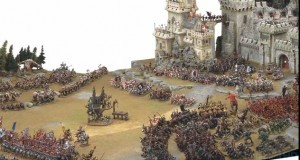When I play games, I play to win. I want to be the best and I want everyone else to know that I’m the best. For most table-top games there is a clearly defined way to identify the winner. In fact many games – including Monopoly, Scrabble and Chess – all have tournaments or championships to crown the best of the best.
When it comes to D&D it’s just not that easy. How do you prove to the guys at your table, and more importantly other gamers, that you are the best at D&D? I’ve given it a lot of thought and I’ve got suggestions for determining the best of the best once and for all.

